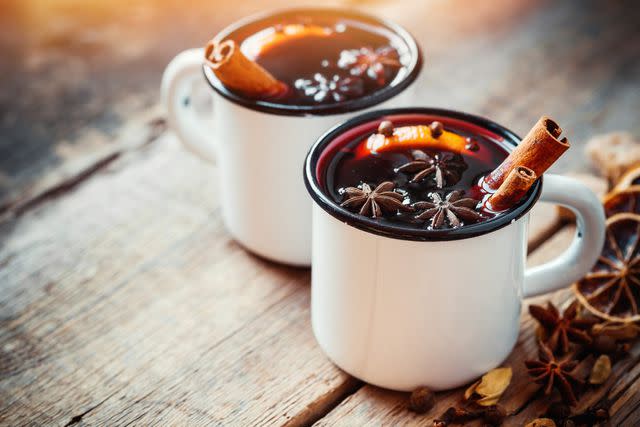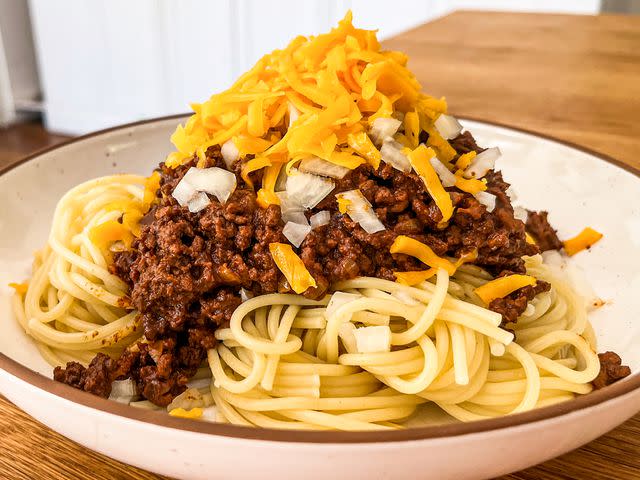Everything You Need to Know About Using Cloves in the Kitchen
Get the 101 on this seasoning that's a symbol of the holiday season.

It wouldn't be an overstatement to say that cloves are the scent of the holidays and cold weather. Strong and distinct, their presence is immediately recognizable, evoking an instant sense of coziness.
If you've ever consumed something dubbed "pumpkin spice", you're already familiar with cloves, since it's a key ingredient in the blend. Cloves like to get real buddy-buddy with other warming spices like cinnamon and nutmeg, especially in cool-weather foods and beverages.
Related: The 5 Winter Spices Your Holiday Cooking Needs
Learn more about this much-beloved spice, including its flavor, history, and how to use it in a host of recipes.
What Are Cloves ?
Cloves are actually flower buds. Specifically, buds harvested before they flower from an evergreen tree aptly named the clove tree, a part of the Myrtle plant family. This tree is found in hot, humid, and tropical locations like India, Zanzibar, Tanzania, Madagascar, and Sri Lanka. But the country most associated with its growth is Indonesia.
Once harvested, the green, immature buds are dried, where they turn a deep, dark reddish-brown. The buds are small, only about 1 centimeter long, and are shaped like a little spike or stake, with a bit of a bulbous top.
Cloves are sold both whole and ground, with the spice losing a bit of its pungency once ground and getting duller over time.

Get the recipe: Mulled Wine
What Does Clove Taste Like?
The smell of cloves mimics its flavor in that it is strong, distinct, and intensely warm. The taste is bittersweet and finishes with a healthy amount of astringency.
Nutmeg, cinnamon, and allspice are all similar to cloves and are often combined – the most recognizable of these combinations being pumpkin pie blends, but also Chinese five-spice and garam masala.
You'll notice the amount of cloves in a recipe is small - that's because it packs a giant punch in tiny amounts. Whatever it touches instantly receives a large depth of flavor and perception of cozy.
Related: How Did Pumpkin Spice Become the Unofficial Flavor of Fall?
How to Use Cloves
Whether going the sweet or savory route with your cloves, it's always best to use the spice sparingly. If you're using whole cloves, be sure to strain or otherwise pull them out of your dish before serving it. Cooking won't soften a whole clove, and they'll be firm and woody, and unpleasant to bite into.
Use cloves to flavor a sauce or soup, make a marinade or meat rub, or stud a holiday ham. You'll find cloves in rice dishes and many Indian dishes, as well as chili, pot roast, and many pickling spice mixtures.
Ground cloves are often used in desserts and baked goods, especially around the cold weather holidays, like the classic pumpkin pie, gingerbread, and other cookies, breads, and cakes. Warm drinks also love cloves, like mulled wine, chai, and hot cider.

humblepieliving
Get the recipe: Authentic Cincinnati Chili
In History and Culture
Cloves were named after the French word "clou", meaning "nail" and it's clearly a reflection of their appearance after the drying process, resembling teeny tiny nails, thumbtacks, or even prehistoric clubs.
Their rich culinary and medicinal history spans thousands of years and many continents. In Ancient China, cloves were used in cooking, but also in perfumery and in medicine.
Related: 15 Flavorful Desserts for People Who Love Pumpkin Pie Spice
The trading of the spice became quite lucrative, indeed, influencing wars and territories across the world. The trading of cloves originated in the Spice Islands, an island chain that exists today as a part of Indonesia.
Related:
Read the original article on All Recipes.

